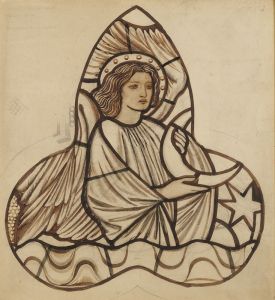
Venus
A hand-painted replica of Zygmunt Waliszewski’s masterpiece Venus, meticulously crafted by professional artists to capture the true essence of the original. Each piece is created with museum-quality canvas and rare mineral pigments, carefully painted by experienced artists with delicate brushstrokes and rich, layered colors to perfectly recreate the texture of the original artwork. Unlike machine-printed reproductions, this hand-painted version brings the painting to life, infused with the artist’s emotions and skill in every stroke. Whether for personal collection or home decoration, it instantly elevates the artistic atmosphere of any space.
Zygmunt Waliszewski was a Polish painter known for his contributions to the modern art movement in Poland during the early 20th century. His work often reflected a synthesis of various artistic influences, including Post-Impressionism, Fauvism, and elements of Polish folk art. One of his notable works is the painting "Venus," which exemplifies his unique style and artistic vision.
"Venus" by Zygmunt Waliszewski is a painting that captures the artist's fascination with classical themes reinterpreted through a modern lens. Although specific details about the painting's creation date and current location are not widely documented, it is recognized as part of Waliszewski's broader oeuvre that often revisited mythological and allegorical subjects.
Waliszewski's "Venus" is characterized by its vibrant color palette and dynamic composition, elements that are hallmarks of his artistic style. The painting likely draws inspiration from the classical myth of Venus, the Roman goddess of love and beauty, a subject that has been a popular motif in Western art for centuries. Waliszewski's interpretation, however, is distinct in its modernist approach, utilizing bold colors and expressive brushwork that reflect the influence of Fauvism and other contemporary art movements of his time.
The depiction of Venus in Waliszewski's work may not adhere to traditional representations of the goddess, instead offering a more abstract or stylized portrayal. This approach aligns with the artist's tendency to blend realism with abstraction, creating a unique visual language that challenges conventional artistic norms. His work often incorporated elements of Polish culture and folklore, suggesting that "Venus" might also contain subtle references to his national heritage.
Zygmunt Waliszewski was part of the "Formists," a group of Polish artists who sought to break away from academic art traditions and explore new forms of expression. His work, including "Venus," reflects this desire for innovation and experimentation. The Formists were known for their eclectic style, drawing from various avant-garde movements and emphasizing the importance of individual artistic expression.
While specific exhibitions or collections featuring "Venus" are not extensively documented, Waliszewski's work has been displayed in various galleries and museums, particularly in Poland. His contributions to modern art have been recognized posthumously, and his paintings continue to be studied for their unique blend of influences and their impact on the development of Polish art in the 20th century.
In summary, "Venus" by Zygmunt Waliszewski is a testament to the artist's ability to reinterpret classical themes through a modernist perspective. The painting embodies the vibrant colors, dynamic composition, and innovative spirit that define Waliszewski's artistic legacy. Although detailed information about the painting is limited, it remains an important part of his body of work, reflecting both his personal style and the broader artistic movements of his time.








![At Figaro’s [at a hairdresser’s]](/imgs/234685/s/zygmunt-waliszewski-at-figaros-at-a-hairdressers-f5e795de.jpg)









